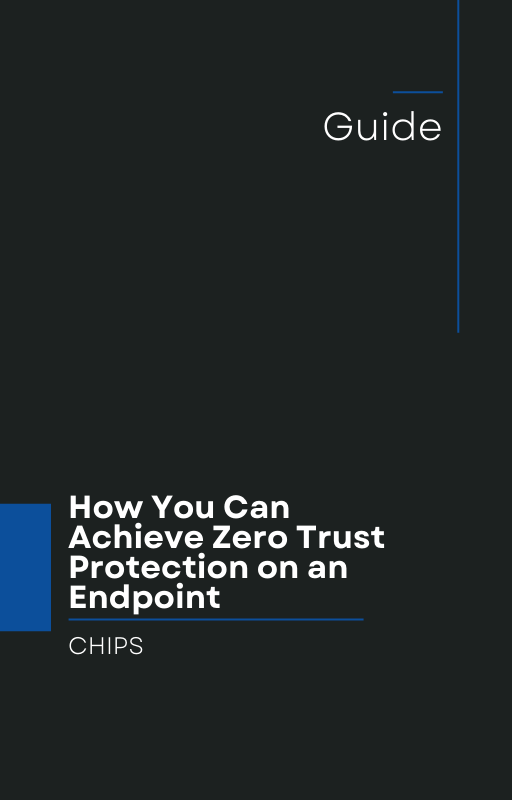Your organization just received another wake-up call. The Cybersecurity and Infrastructure Security Agency (CISA) and the National Security Agency (NSA) have jointly released updated guidance on securing on-premises and hybrid Microsoft Exchange Server environments. BleepingComputer
Here’s the harsh reality: threats are evolving, legacy systems remain in play, and relying solely on detect-and-respond is no longer sufficient. It’s time to adopt a strategy of isolation and containment—one that the proven endpoint protection solution AppGuard has been delivering for over a decade.
The Exchange Server Threat Landscape
According to the advisory, CISA and NSA emphasise several critical actions: harden authentication and access controls, decommission end-of-life Exchange servers, minimise the attack surface, and implement strong encryption and modern authentication mechanisms.
Key points from the joint guidance include:
-
Remove or upgrade unsupported on-premises Exchange servers (many orgs still have systems that should have been retired).
-
Require multifactor authentication (MFA), modern auth (OAuth 2.0), avoid NTLM, adopt Kerberos where possible.
-
Restrict administrative access to authorised workstations only, enforce role-based access, enable HTTP Strict Transport Security, certificate based signing, and configure transport layer security to mitigate man-in-the-middle and forwarding attacks.
-
Activate built-in anti-spam and anti-malware features, apply security baselines for both Exchange and Windows systems.
The advisory also notes that previous zero-day vulnerabilities such as ProxyLogon and ProxyShell were exploited by state-backed and financially motivated adversaries to gain domain-wide access.
In short: if you still have outdated Exchange servers or haven’t adopted zero-trust access controls, your business is exposed.
Why Detect-and-Respond Isn’t Enough
Traditionally many organizations have focused on detection tools—EDR, SIEM, log analytics—with the idea that if we catch something quickly enough we can respond and recover. But this model has critical limitations:
-
Detection means attackers still gain a foothold before alarms trigger.
-
Response actions often happen after lateral movement or data exfiltration has begun.
-
In fast-moving campaigns, the window between compromise and damage is shrinking.
-
Legacy Exchange server vulnerabilities have repeatedly shown that once in, adversaries can pivot into broader environments—making response too late.
The guidance from CISA/NSA underscores that hardening, removal of unsupported systems, and proactive controls are essential—not optional. If you rely solely on detecting after compromise, you are one step behind the attacker.
Move to Isolation and Containment with AppGuard
This is where AppGuard steps in. For more than a decade, AppGuard has provided endpoint protection via isolation and containment—not just detection and reaction. Consider the tangible benefits:
-
Pre-execution isolation: Rather than waiting for malware signatures or telemetry to flag an event, AppGuard contains unknown or untrusted code before it executes and spreads.
-
Containment of lateral movement: Once a threat lands, isolation prevents it from navigating to other systems or escalating privileges—even on high-risk assets such as Exchange servers.
-
Minimal reliance on detection signatures or heuristic alerts: Many modern attacks are signature-less, AI-written, or zero-day. AppGuard’s containment model bypasses the need for upfront detection.
-
Proven track record: With a ten-year commercial history, AppGuard has been protecting enterprises across sectors—including healthcare, manufacturing, automotive supply chains and critical infrastructure.
-
Rapid deployment on endpoints: Business owners don’t need to build complex detection pipelines or hire big SOC teams. AppGuard integrates to deliver containment controls at the endpoint level.
In the context of the Exchange guidance from CISA/NSA, AppGuard fills the critical gap: while you harden authentication, retire unsupported servers, and apply patches, you also need a layer of protection that stops threats when they attempt execution—before they spread.
Real-World Implications for Business Owners
Let’s translate this into business risk:
-
A manufacturing supplier hosts an on-prem Exchange server still in supported status—but lacks robust segmentation. A zero-day exploit hits. The attacker gains domain access, spreads across the supply chain, halting assembly lines and causing millions in downtime.
-
A healthcare network has a hybrid Exchange deployment. Remote phishing gives credentials. Malware lands via Exchange and executes ransomware that encrypts EMR systems and forces patient care disruption.
-
An enterprise financial services firm has outdated Exchange appliances that were forgotten. Attackers exploit them, gain persistent access and sift through archives, exfiltrating client data and triggering regulatory breach fines.
In each scenario the failure wasn’t just detection—it was allowing execution and lateral spread. By adopting AppGuard’s isolation and containment, business owners add a decisive layer that catches and stops threats regardless of whether they were detected first.
Why Now is the Time to Act
The advisory from CISA and NSA highlights that tens of thousands of Exchange servers remain vulnerable, including systems with critical zero-day exposures.
With threat actors continuing to exploit these gaps and the attack surface expanding via remote work, hybrid cloud, and AI-driven malware, adjusting your security model is urgent. Isolation and containment are no longer optional—they are essential.
By pairing your hardening efforts (as recommended by CISA/NSA) with a robust endpoint containment solution like AppGuard, you shift from reactive to proactive, from “detect and respond” to “isolate and contain”.
Call to Action
Business owners: don’t wait until your Exchange servers—or any critical asset—become the next breach headline. At CHIPS we specialize in helping organizations adopt AppGuard to bolster their defenses. Let’s schedule a conversation about how you can:
-
Ensure your endpoints are protected before threats can execute
-
Move your strategy from detect and respond to isolation and contain
-
Add a proven layer of security to your hardening, patching and identity controls
Reach out today and let’s discuss how AppGuard can prevent the kind of incident the CISA/NSA guidance warns about. Your business cannot afford to wait.
Like this article? Please share it with others!

November 7, 2025

Comments